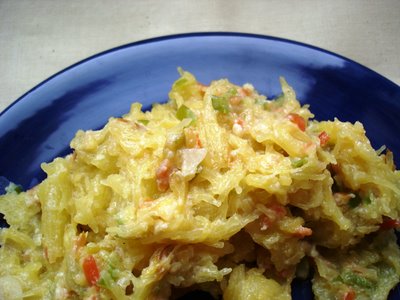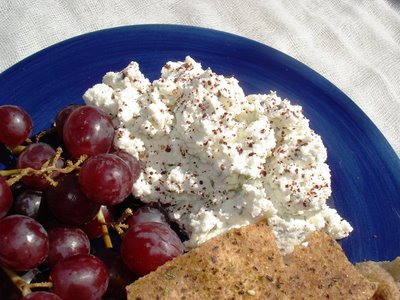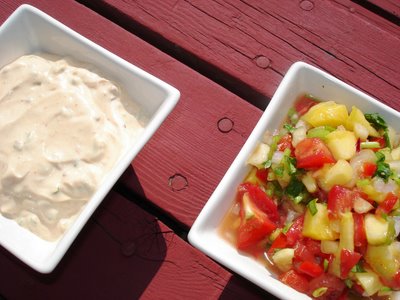
Autumn always feels like the right time to use apples - their reds, golds, and greens reflect the intensified colours on the trees. I had some Jona Golds and Granny Smiths and wanted to do something different with them than my usual fruit crisp. For once I didn't have lemons on hand - lemon juice is often added to apple desserts to sharpen them and prevent the fruit from browning - but I did have apple cider vinegar. I also wanted to use up some raisins leftover from making granola and part of a tube of almond paste, so settled on a cobbler with almond flavoured biscuits cooked on top. I like the cobbler method of precooking the fruit before adding the biscuits because you have a chance to taste and fix the fruit mixture before baking the final dish.
Peel and slice eight apples into a baking dish. They can be any variety, but try and use more than one kind of apple if you can. Toss the apples with 2 tbs corn starch, 2/3 cup dark brown sugar and 2 tbs apple cider vinegar as you go. Add 3/4 cup raisins and 1 tsp almond flavouring. Can use a tbs or so of Amaretto if that is what you have on hand. Cover and bake for 20-25 min in a medium oven, about 350 deg F, until fruit is tender. Taste and adjust for sweetness and seasoning. (Also, if you are using a very shallow pan, you might need to add some water.)
Meanwhile, mix 1 3/4 cups of biscuit mix with 2/3 cup of milk. (No biscuit mix? 1 1/2 cups of flour, 2 tsp baking powder, 1 tsp salt, 2 tbs butter worked into dry ingredients.) Crumble 1/4 lb almond paste into dough and mix well, adding a bit more milk if dough becomes too stiff. Drop by spoonfuls on top of hot fruit mixture. Smooth tops of biscuits with butter and sprinkle with more brown sugar or crumbled almond paste. Return baking dish to oven and bake uncovered for 15-20 minutes, til biscuits are just cooked.
This ended up feeling very English, for some reason - I had the desire to pour custard overtop. I ate it with lebnah and it was fantastic.









